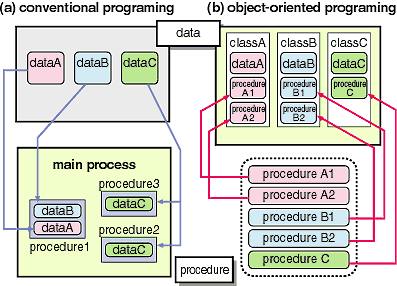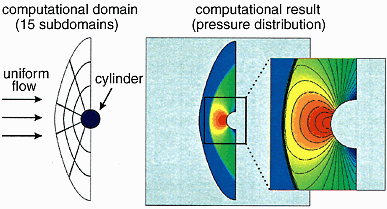It is often necessary to change a model or algorithm of a program
for the sake of correction or improvement during the development or
execution of a large-scale, complicated program for a parallel distributed
computer system. In order to facilitate development, improvement, and
correction of a parallel computer program we developed a simulation
framework according to the "object-oriented programing method" and confirmed
the effectivity of the framework.
Within the framework of conventional programing, a program is usually
constructed by putting the emphasis on the "computational procedure"
rather than the "data structure concerned with computation." If we parallelize
a computation program on the basis of the conventional framework, therefore,
the parts of the program dependent on the overall data structure necessary
for data assignment to each parallel processor are not clearly distinguished
from the parts dependent on the computational procedure, which makes
the parallelization rather complicated. According to the object-oriented
programing method, on the other hand, we make a "class" consisting of
a part of the divided objective data and related computational procedure.
The whole program is constructed so that the necessary process is carried
out within each class independently (Fig. 11-5). When we solve a partial
differential equation by the domain decomposition method (DDM), for
example, functions to decompose the computational domain and to connect
the solutions obtained in each subdomain are allotted to the framework
and it is not necessary for users to be clearly aware of the parallel
structure of the program. As a result "reuse" of program elements is
facilitated and "portability" of the program among parallel computers is advanced.
Figure 11-6 shows the computational result of a shock wave in front
of a cylinder which was solved by the finite volume method in which
the whole domain was divided into 15 subdomains in the object-oriented
programing framework. |

